Watch this quick Maestro2 demo
Product Features
The Maestro2 in Clinical Practice
Key Features
- USER-FRIENDLY: Robotic OCT and true color fundus camera with single-touch automated capture
- OCTA: Aerial views of the retinal vasculature are at predefined levels relevant to disease
- ANGIO B: Color-coding helps discern both normal and abnormal blood flow
- WIDEFIELD SCAN: 12x9mm 3D wide scan captures macula and optic disc and includes the Hood Report for Glaucoma
- HIGH RESOLUTION: Multimodal Imaging with OCT and true color fundus photography*
- COMPACT FOOTPRINT: Space-saving design fits into any practice setting
*True, full color fundus image simultaneously captured with white light, 24-bit color.
Maestro2 OCT + Fundus Camera with Harmony® Clinical Data Management is a one-touch, one-screen diagnostic solution.
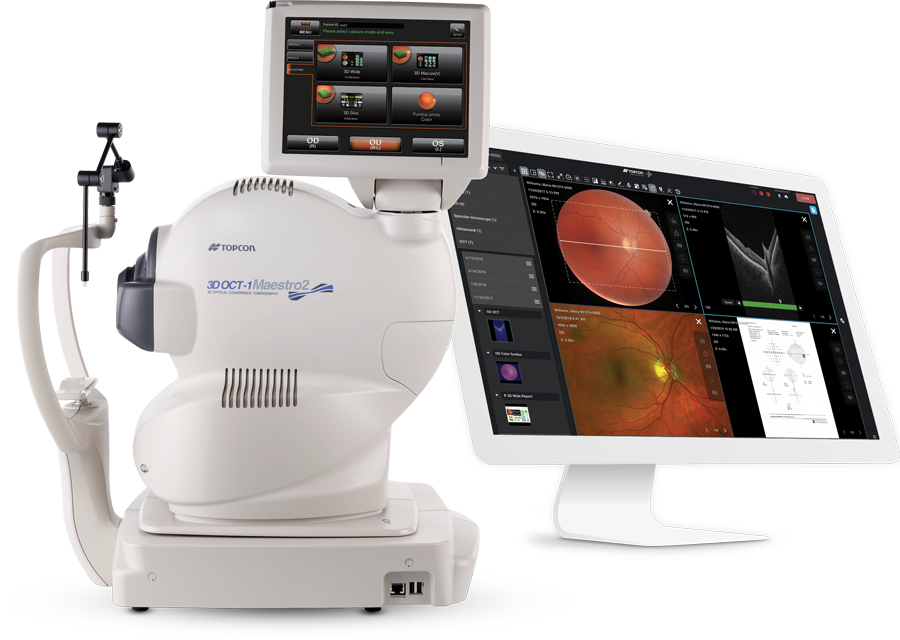
Ready to learn more?

Contact us today
Maestro2 Training Videos
To access our complete library of eye health education, register for Topcon Healthcare University today.
| OBSERVATION & PHOTOGRAPHY OF THE FUNDUS | |
| Type of Photography | Color, Red-free (Note 1) & IR |
| Picture Angle for Photography | 45° ±5% or less |
| Photographable Diameter of Pupil | ø4.0mm or more : When small pupil diaphragm is not used. |
| Fundus Image Resolution (on fundus) | Center : 60 lines/mm or more |
| OBSERVATION & PHOTOGRAPHING OF THE FUNDUS TOMOGRAM | |
| Scan Range (on fundus) | Horizontal direction 3 – 12mm ±5% or less |
| OCT Scan Pattern | 3D scan (horizontal/vertical) |
| OCTA Scan Pattern | 6 x 6mm, 4.5 x 4.5mm, 3 x 3mm |
| Scan Speed | 50,000 A-Scans per second |
| Photographable Diameter of Pupil | ø2.5mm or more |
| OBSERVATION & PHOTOGRAPHING OF THE ANTERIOR SEGMENT | |
| Type of Photography | Color & IR |
| Operating Distance | 62.6 ±0.1mm (when taking a picture of anterior segment) |
| OBSERVATION & PHOTOGRAPHING OF THE ANTERIOR SEGMENT TOMOGRAM | |
| Scan Range (on cornea) | Horizontal direction 3 – 6mm ±5% or less |
| Scan Pattern | Linear scan (Line-scan/Radial-scan) |
| Scan Speed | 50,000 A-Scans per second |

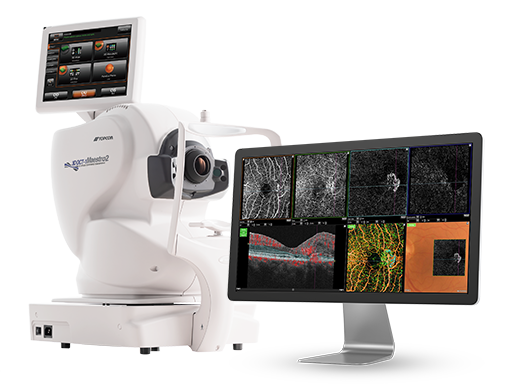



















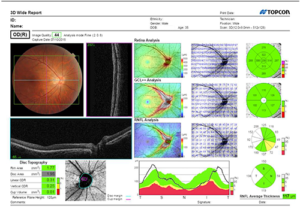
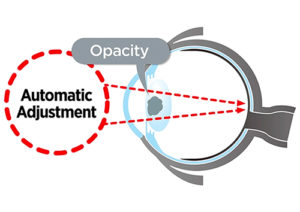
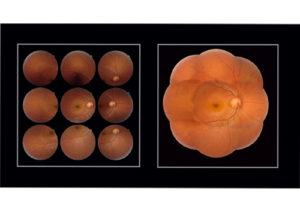
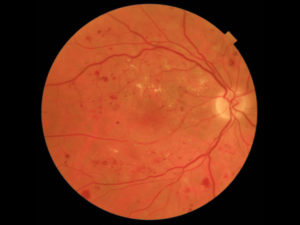
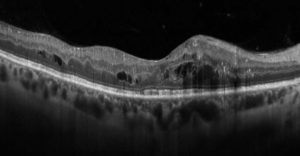
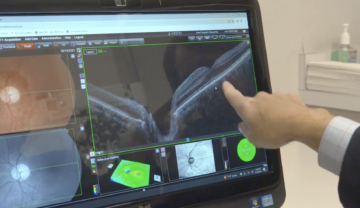

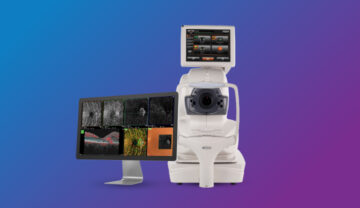
Maestro2, the robotic OCT fundus camera, now with OCTA, offers unparalleled detail in assessing both retinal structure and vascular function—all from a single scan. The Maestro2 provides OCT reference data for the optic nerve, RNFL, ganglion cell, and macular thickness. Plus, you’ll get a true-color fundus photo with pinpoint registration to the OCT.